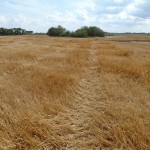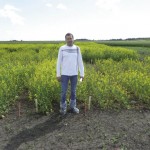
Tag Archives soil nutrients

Bioreactors in tiled fields could themselves benefit from draining
Bioreactors are meant to filter nitrogen from tile water to help with runoff nutrient loads, but drying them out from time to time might increase their effectiveness

Do farmers need to apply sulphur to their crops every year?
Research suggests this important nutrient hangs around a lot longer than farmers think

Understanding soil phosphorus, part 1
Agronomy Management: Rotations and fertilizer management have dramatic effects on pools of organic and inorganic P

Feeding dry fields
Prairie farmers find more than one way to optimize fertilizer efficiency, whether in dry growing seasons or in any growing season

Cover crops: enough already
The benefits are often 'blown up' while the challenges are understated

Turning city waste into good fertilizer
Soil Management: Lystek International’s CFIA-registered fertilizer takes waste from sewage to nutrition

The broad basics of your soil’s pH
Soil pH is complex, and has different impacts on the availability of different nutrients

Soil testing more relevant than ever
If you don’t know what nutrients are in the soil it’s hard to meet your crop’s needs

The value of wheat straw
It can be tempting to burn wheat straw, but that nitrogen is valuable

Synergy and the four Rs
To get the most from your fertilizer plan, consider the relationships between variables


